2017
Growing together through emotions over time
Solo show
Galerie Mark Müller
Galerie Mark Müller
26/8/17 – 14/10/17
Zürich
Zürich

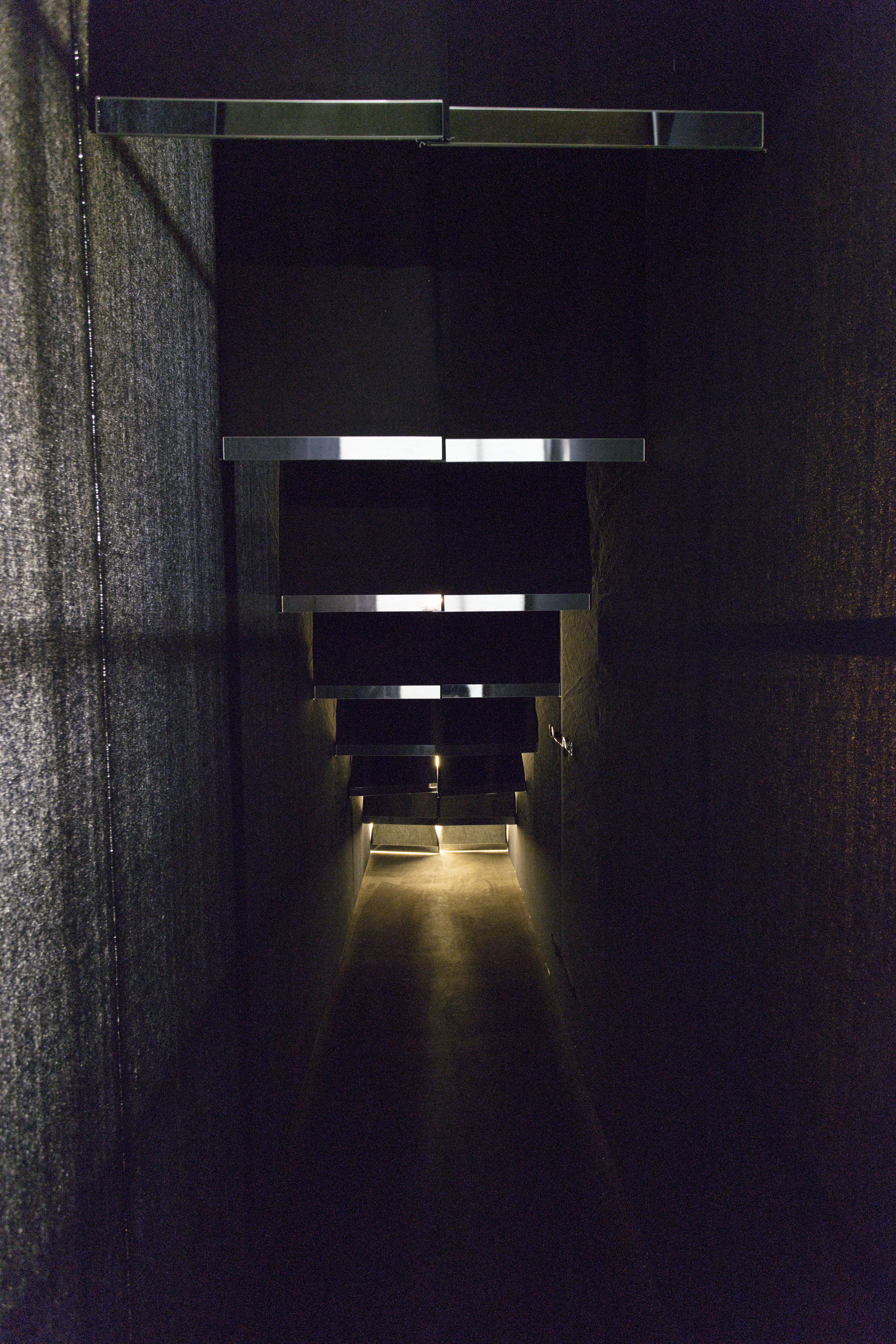
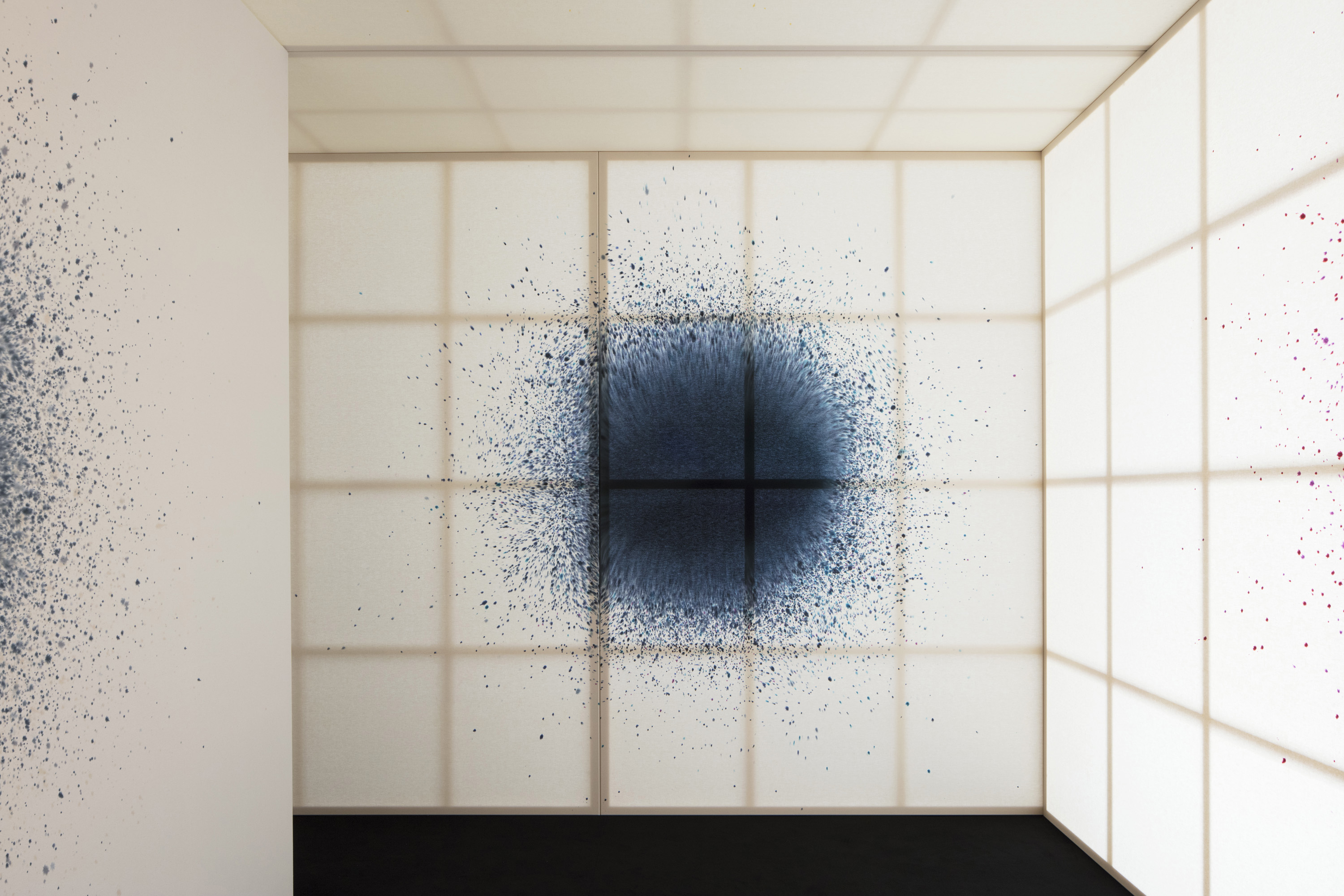
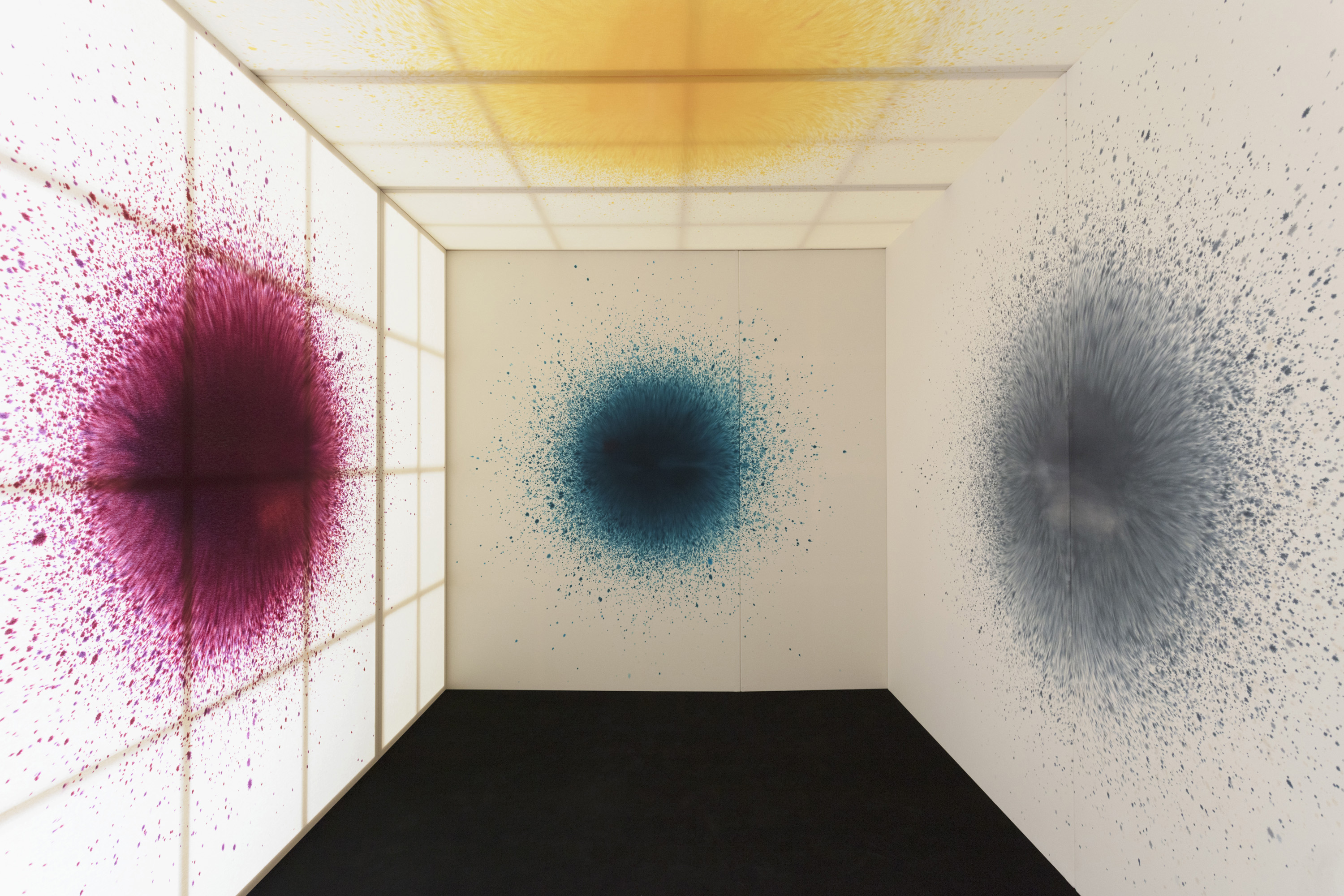
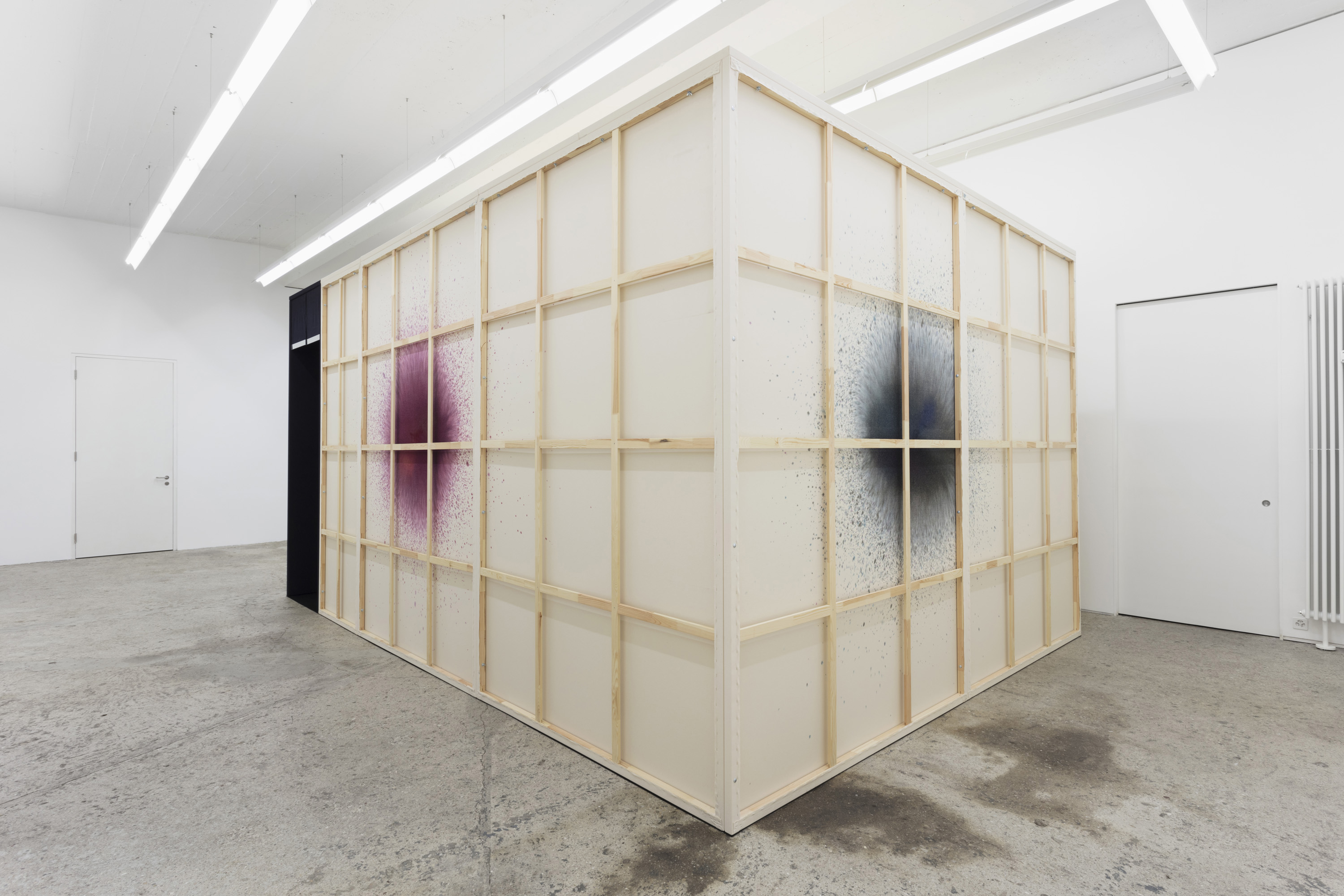
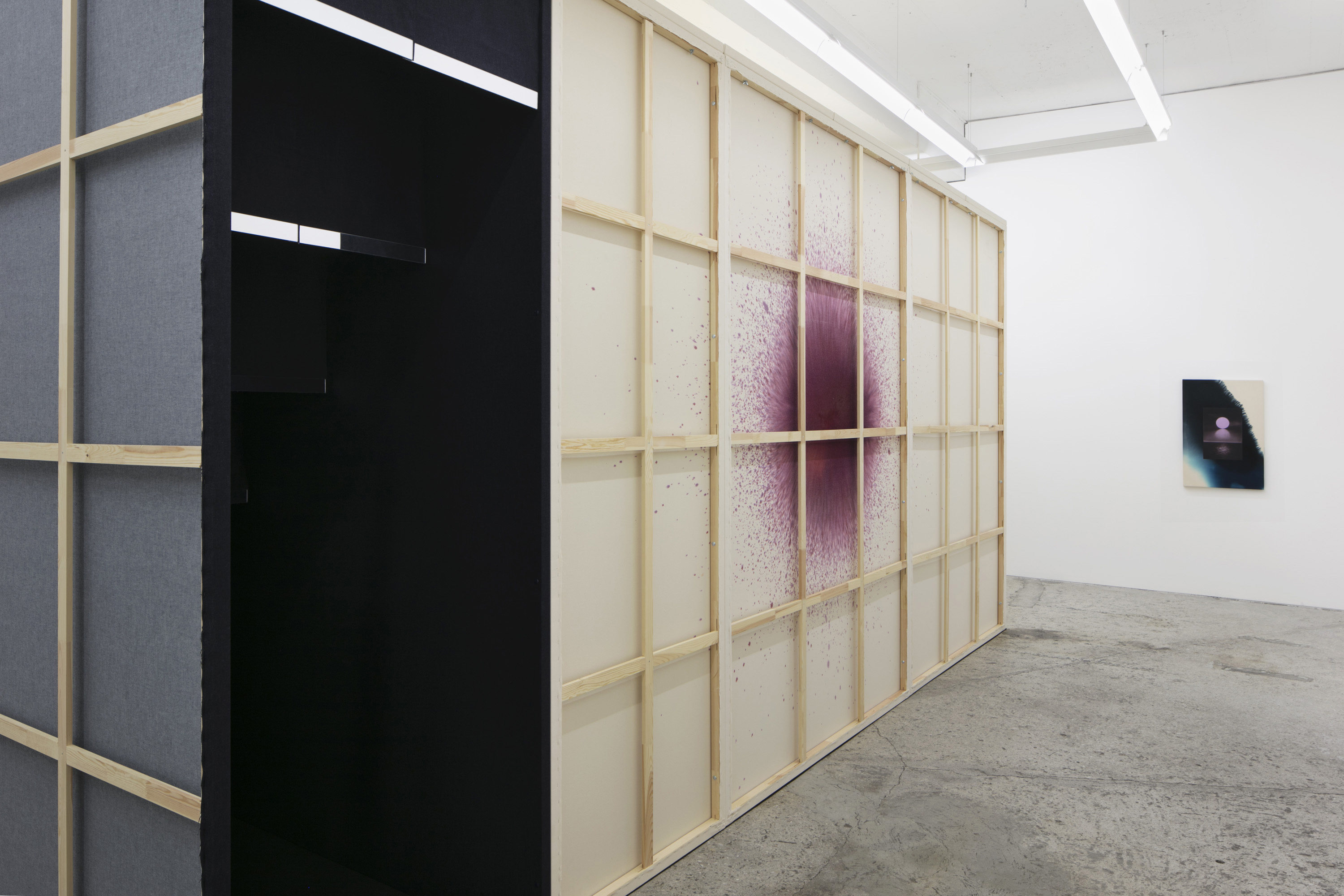

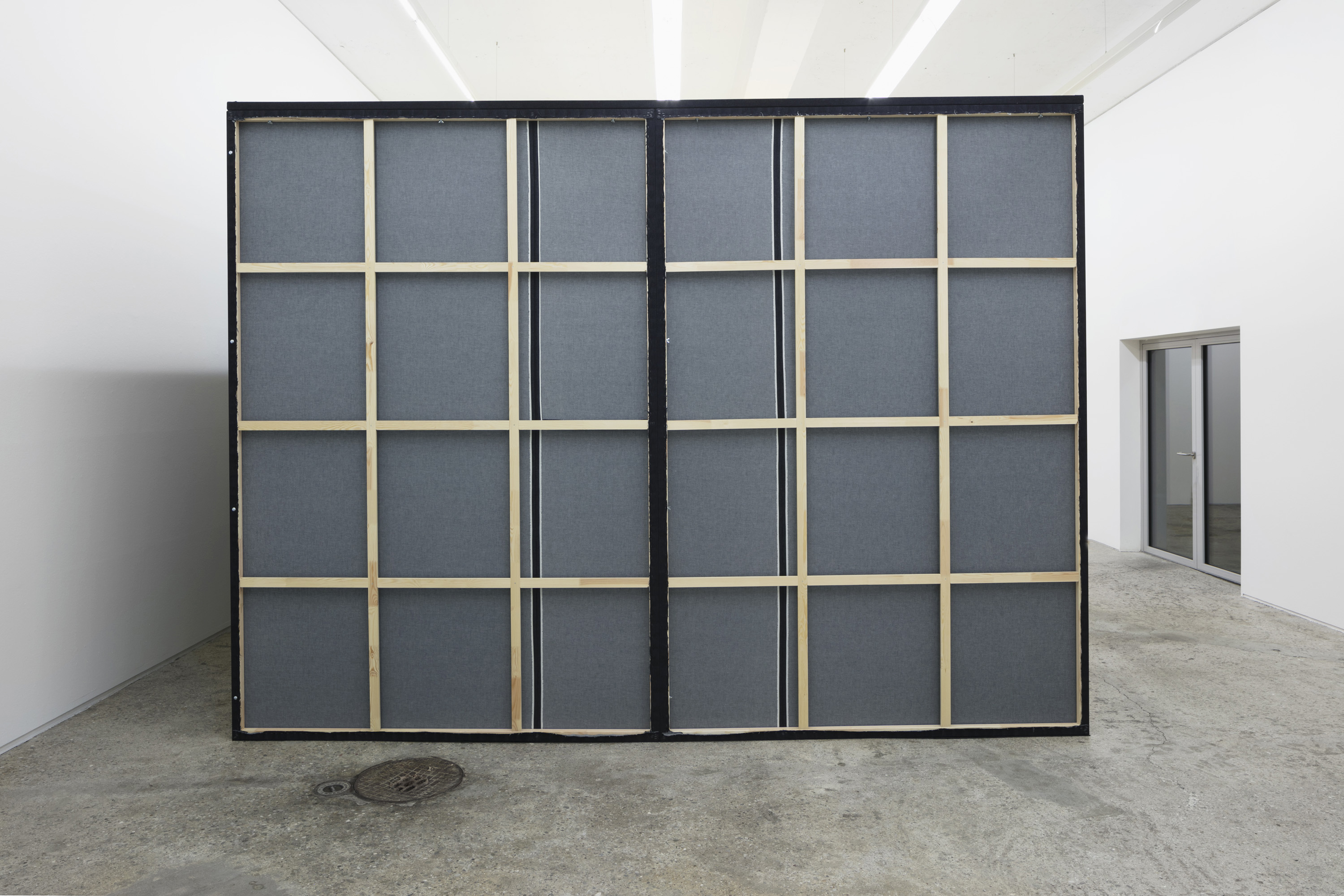
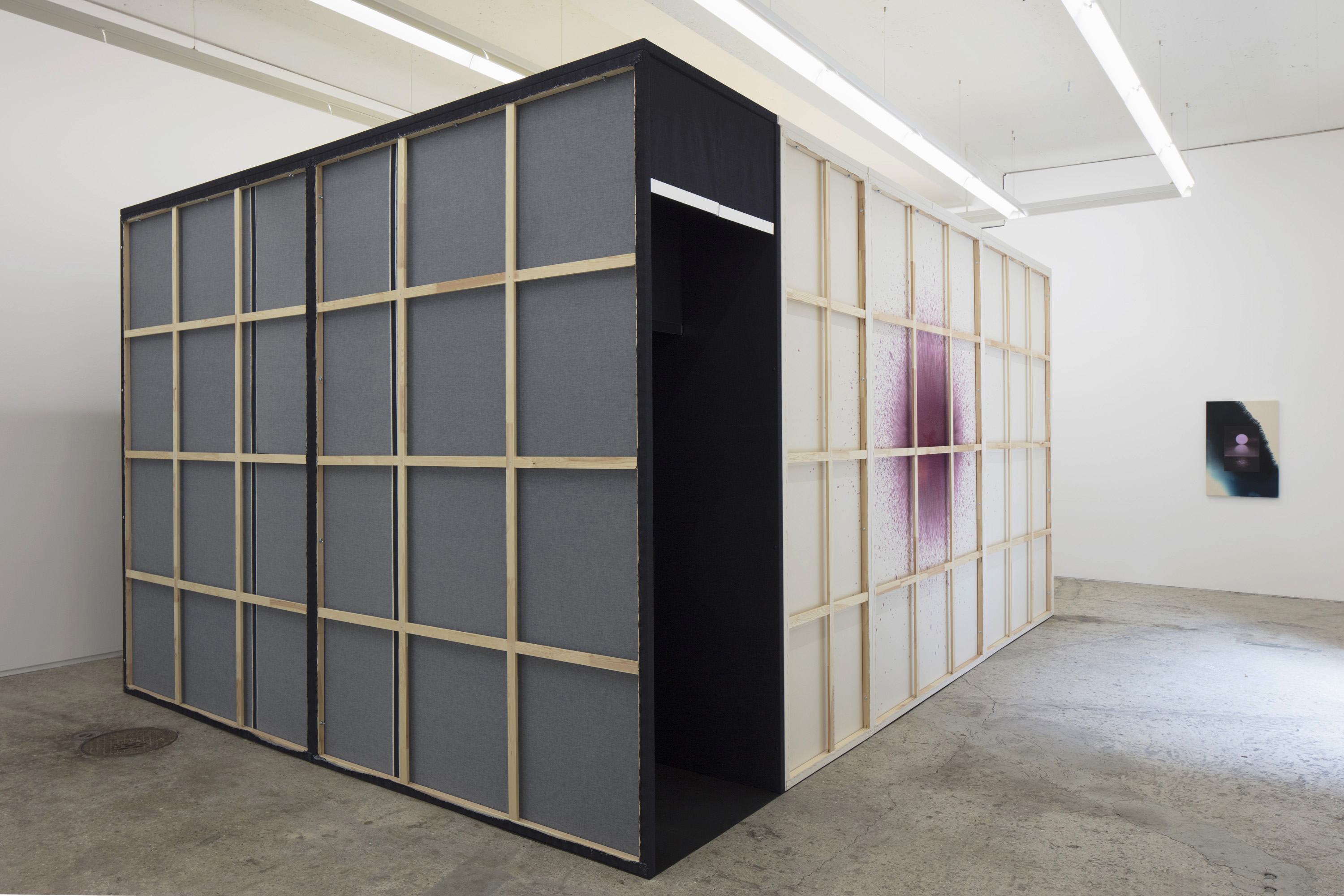
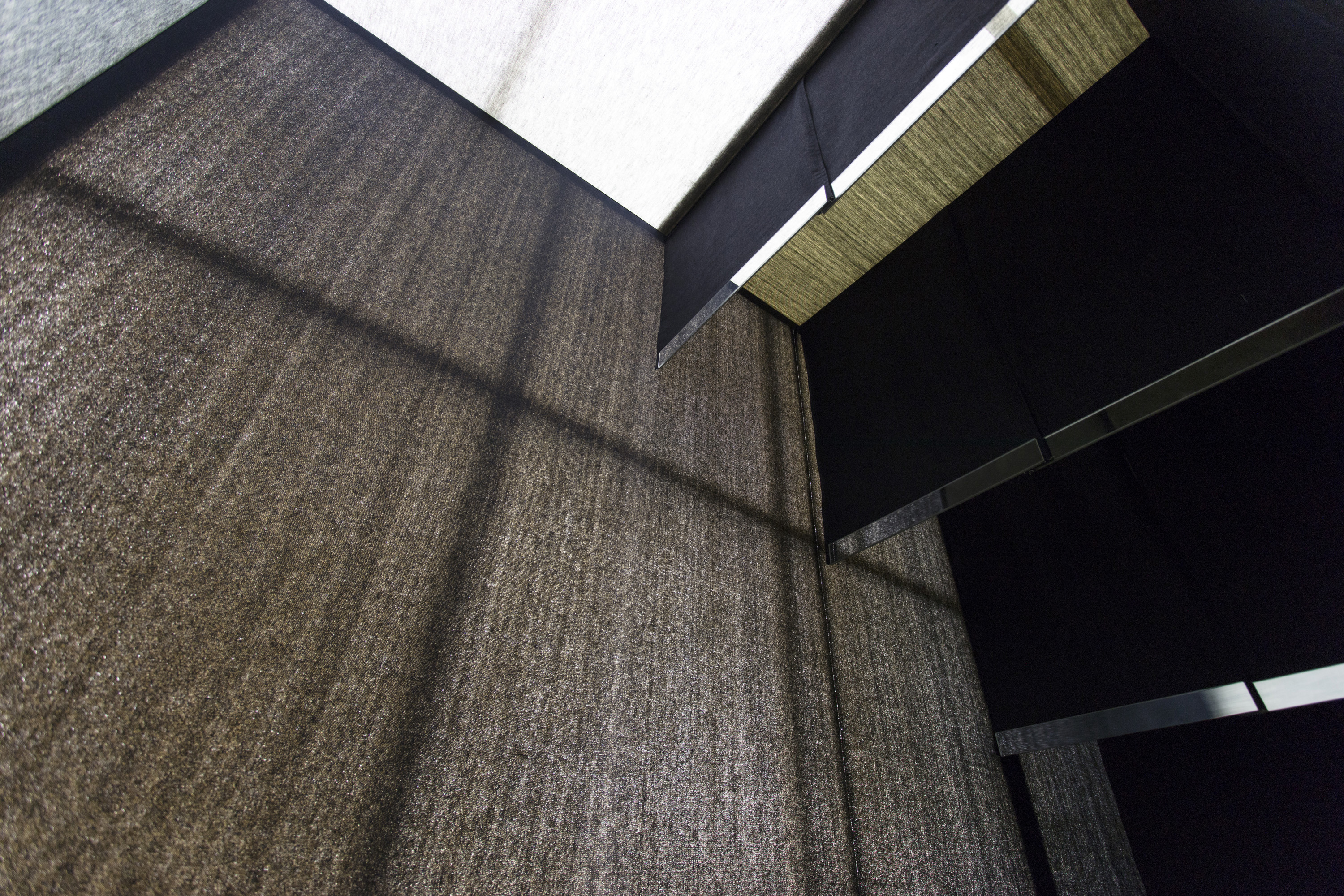
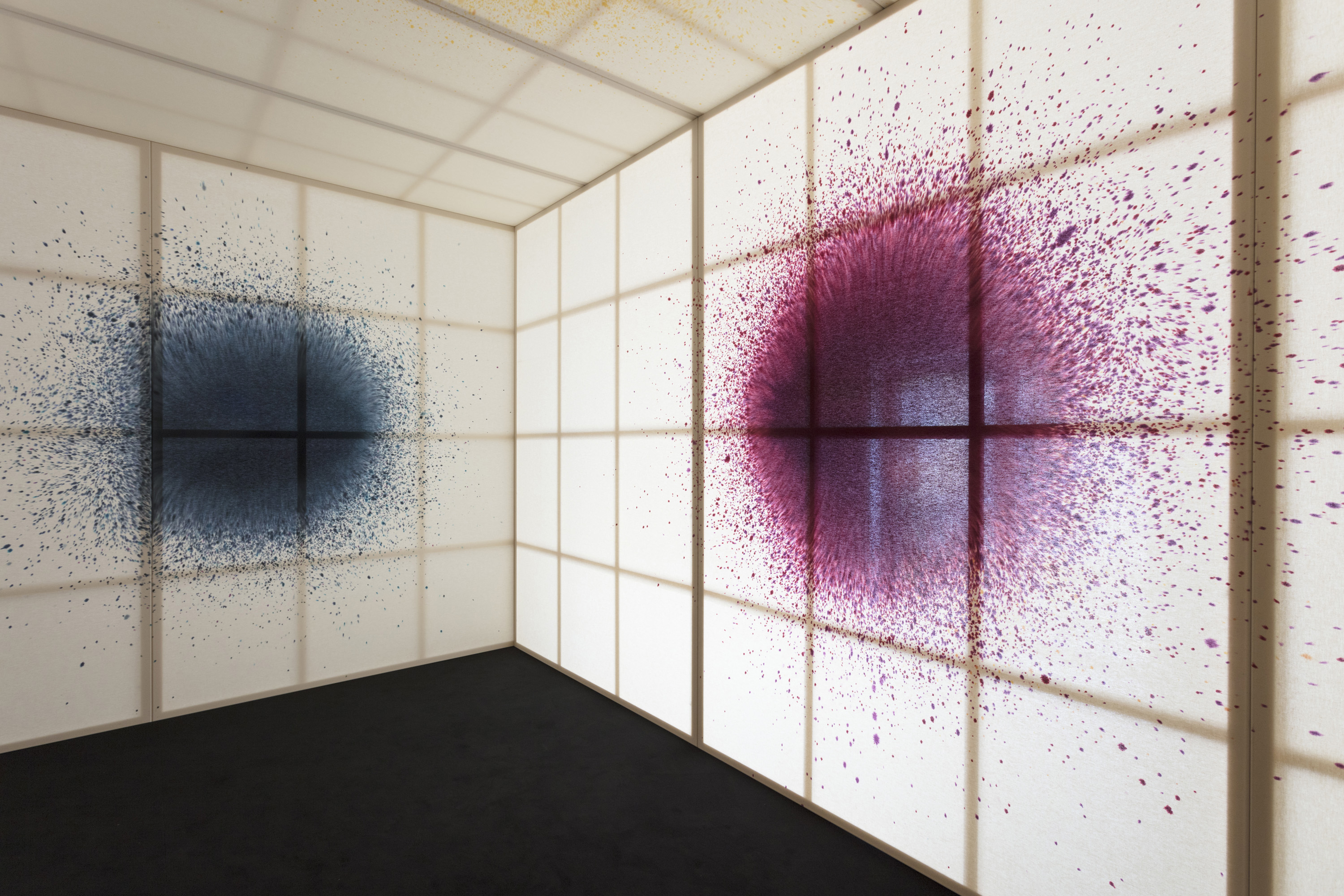
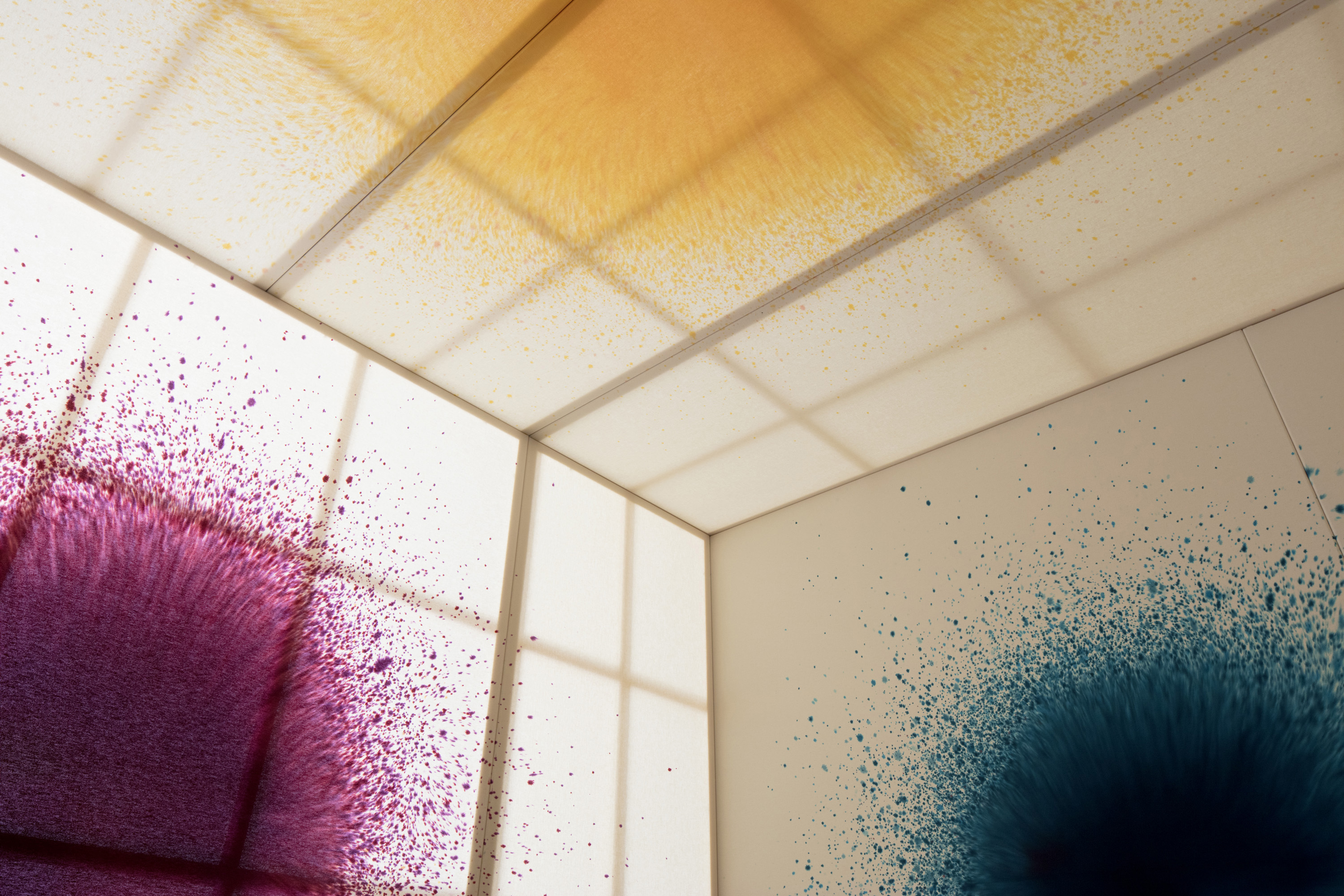
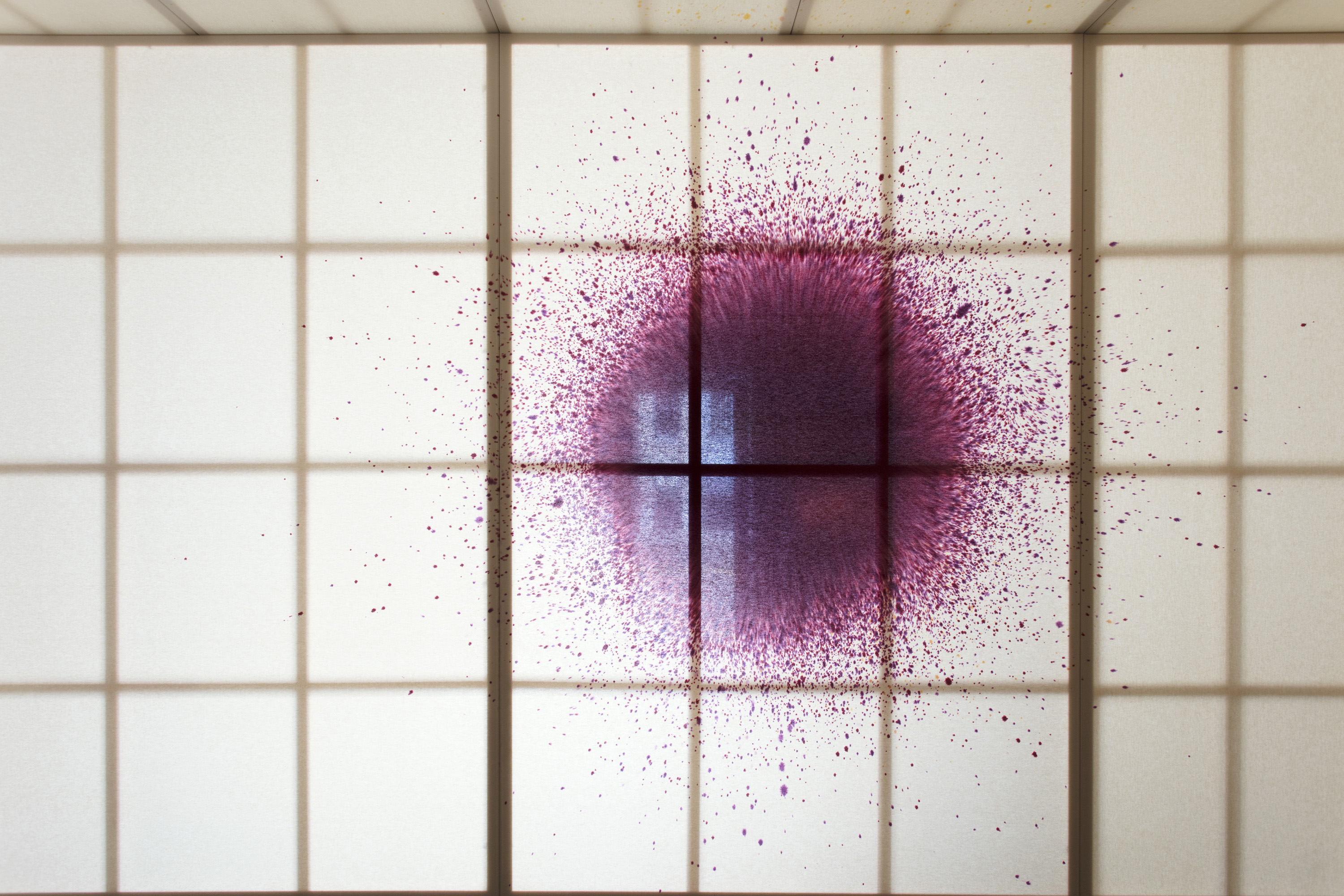
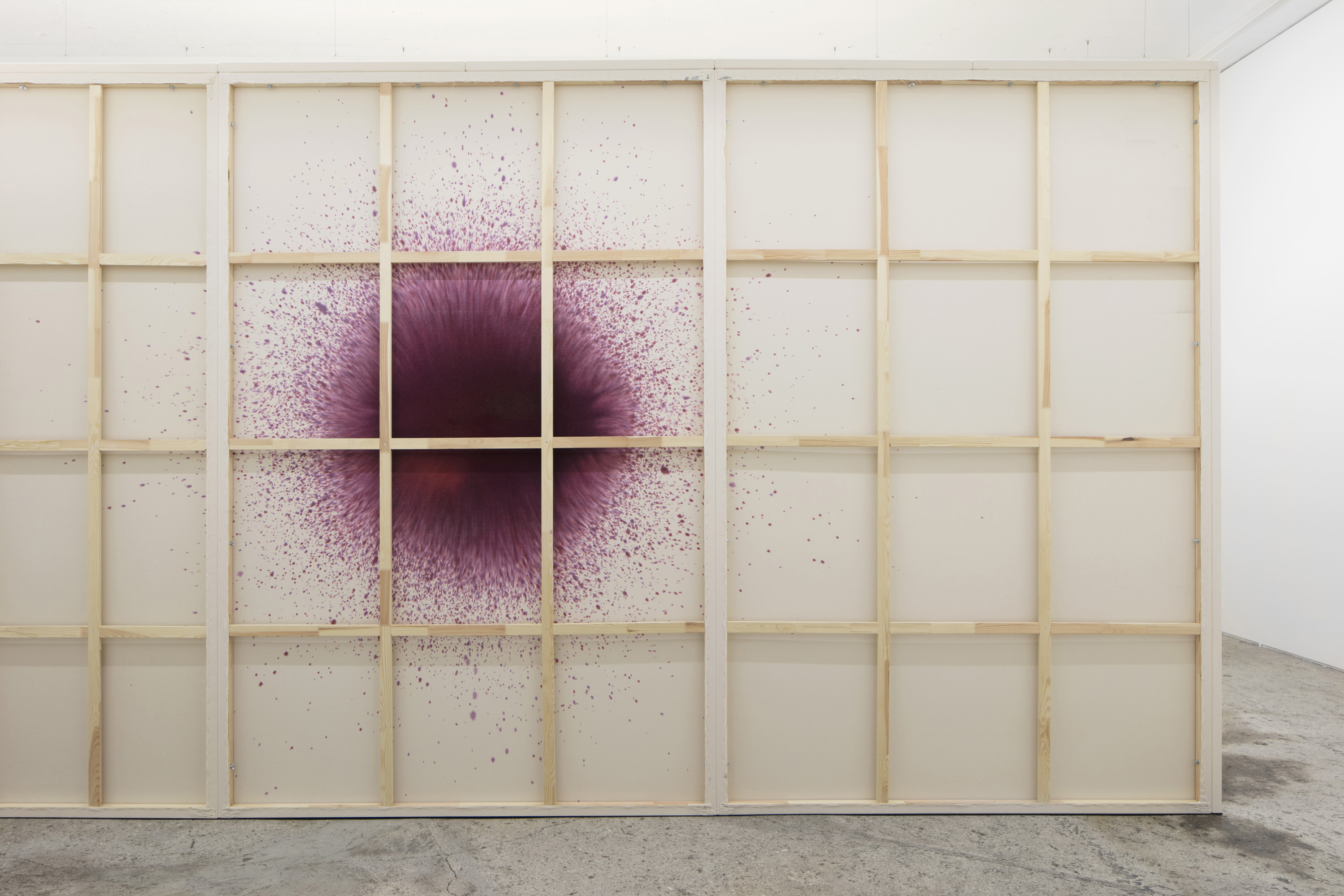
“Colour is a means of exercising direct influence upon the soul. Colour is the keyboard. The eye is the hammer, while the soul is a piano of many strings. The artist is the hand through which the medium of different ke-ys causes the human soul to vibrate.”
Wassily Kandinsky, ‘Concerning the Spiritual in Art’, 1912
In his essay ‘Concerning the Spiritual in Art’, Wassily Kandinsky analyses the relationship between colour and form and how their connection has the power to condition the human experience towards a painting. Imagining an encounter with something new, Kandinsky considers the experience to be rather superficial and surprising, like a child discovering its surroundings or when a finger touches an ice cube. Body and mind react upon the unknown experience as an immediate physical response towards a surprising input. Yet such an initial reaction remains superficial, “leaving no lasting impression in the human soul, which remains unaffected”. Then, as soon as the knowledge gets stored in the mind, the new turns into familiar, and the relationship with the “known” becomes one of indifference. Things seem unsurprising once we know them well, but if they become the focus of long-term attention, the relationship between the object and spectator might eventually make the soul vibrate and, ultimately, become spiritual.
As mentioned in the quote, colours and forms are the means through which the art of painting can reach the soul and make it vibrate. What Kandinsky calls the “forms of harmony”, they reflect in a corresponding vibration on the human soul by virtue of paying enough attention to them. Nowadays, however, in contrast to the time in which Kandinsky verbalised his thoughts, the spectator’s physical encounter with art is usually interrupted by other presences and the pervasive tendency to be connected with the rest of the world. Those constant interruptions distract from engaging more in depth with the present moment and the things surrounding us physically. The maximum our limited attention span can attempt to reach is the most superficial level of experiencing a painting, like touching ice with a finger, an instant flash; in the words of Kandinsky, a purely “physical effect”. But in the modern day, how can one
Wassily Kandinsky, ‘Concerning the Spiritual in Art’, 1912
In his essay ‘Concerning the Spiritual in Art’, Wassily Kandinsky analyses the relationship between colour and form and how their connection has the power to condition the human experience towards a painting. Imagining an encounter with something new, Kandinsky considers the experience to be rather superficial and surprising, like a child discovering its surroundings or when a finger touches an ice cube. Body and mind react upon the unknown experience as an immediate physical response towards a surprising input. Yet such an initial reaction remains superficial, “leaving no lasting impression in the human soul, which remains unaffected”. Then, as soon as the knowledge gets stored in the mind, the new turns into familiar, and the relationship with the “known” becomes one of indifference. Things seem unsurprising once we know them well, but if they become the focus of long-term attention, the relationship between the object and spectator might eventually make the soul vibrate and, ultimately, become spiritual.
As mentioned in the quote, colours and forms are the means through which the art of painting can reach the soul and make it vibrate. What Kandinsky calls the “forms of harmony”, they reflect in a corresponding vibration on the human soul by virtue of paying enough attention to them. Nowadays, however, in contrast to the time in which Kandinsky verbalised his thoughts, the spectator’s physical encounter with art is usually interrupted by other presences and the pervasive tendency to be connected with the rest of the world. Those constant interruptions distract from engaging more in depth with the present moment and the things surrounding us physically. The maximum our limited attention span can attempt to reach is the most superficial level of experiencing a painting, like touching ice with a finger, an instant flash; in the words of Kandinsky, a purely “physical effect”. But in the modern day, how can one
experience a work fully and escape the usual, pervasive distractions? How to amplify this physical effect, or deepen the quality of an encounter? In a world in which narratives are meant to tick all the boxes in seconds, how to achieve a long lasting soul vibration?
In Giacomo Santiago Rogado’s conception of «Growing together through emotions over time», the spectator is meant to penetrate the site-specific installation and engage with the work individually. The paintings comprising the show are also at the same time the structure to be penetrated and experienced. Form and colour are put in relation firstly in the paintings and secondly in the installation. All the conditions are meant to abstract the viewer from external distractions and help to trigger full engagement with the paintings; to create a space for nothing but experiencing the works. When looking at them longer and closer, Rogado’s paintings might transport the viewer to another destination, as they might remind us of images from galaxies and other outer-spatial phenomena. The sophisticated processes of their creation suggest delicacy and a certain slow paced phenomenological violence.
Form and colour are related and they influence one another. Furthermore, form contains what Kandinsky calls an “inner harmony”. Shapes such as triangles or circles entail their own inner harmony, which suggests certain feelings. In the case of Rogado, the splash-like forms could remind us of something foreign but known at the same time, which might help to wander and imagine something that is unseen at least in that very moment and space. An imagination used to filling gaps, to deduct how a colour and form that is absent would feel and look, is – as Merleau-Ponty claimed– a “spiritual imagination”.
The spiritual might therefore exist in other ways, besides in religious doctrines and esoteric practices. Its existence might rather be based on engagement, and close, deep, true observation. The forms in Rogado’s paintings invite us to experience and engage, whereas their colours might trigger the imagination and all together play some of the soul strings. If we could just imagine a spirituality like a humble and honest emotion that can be awakened through long and deep contemplation...
Gabriela Acha
In Giacomo Santiago Rogado’s conception of «Growing together through emotions over time», the spectator is meant to penetrate the site-specific installation and engage with the work individually. The paintings comprising the show are also at the same time the structure to be penetrated and experienced. Form and colour are put in relation firstly in the paintings and secondly in the installation. All the conditions are meant to abstract the viewer from external distractions and help to trigger full engagement with the paintings; to create a space for nothing but experiencing the works. When looking at them longer and closer, Rogado’s paintings might transport the viewer to another destination, as they might remind us of images from galaxies and other outer-spatial phenomena. The sophisticated processes of their creation suggest delicacy and a certain slow paced phenomenological violence.
Form and colour are related and they influence one another. Furthermore, form contains what Kandinsky calls an “inner harmony”. Shapes such as triangles or circles entail their own inner harmony, which suggests certain feelings. In the case of Rogado, the splash-like forms could remind us of something foreign but known at the same time, which might help to wander and imagine something that is unseen at least in that very moment and space. An imagination used to filling gaps, to deduct how a colour and form that is absent would feel and look, is – as Merleau-Ponty claimed– a “spiritual imagination”.
The spiritual might therefore exist in other ways, besides in religious doctrines and esoteric practices. Its existence might rather be based on engagement, and close, deep, true observation. The forms in Rogado’s paintings invite us to experience and engage, whereas their colours might trigger the imagination and all together play some of the soul strings. If we could just imagine a spirituality like a humble and honest emotion that can be awakened through long and deep contemplation...
Gabriela Acha